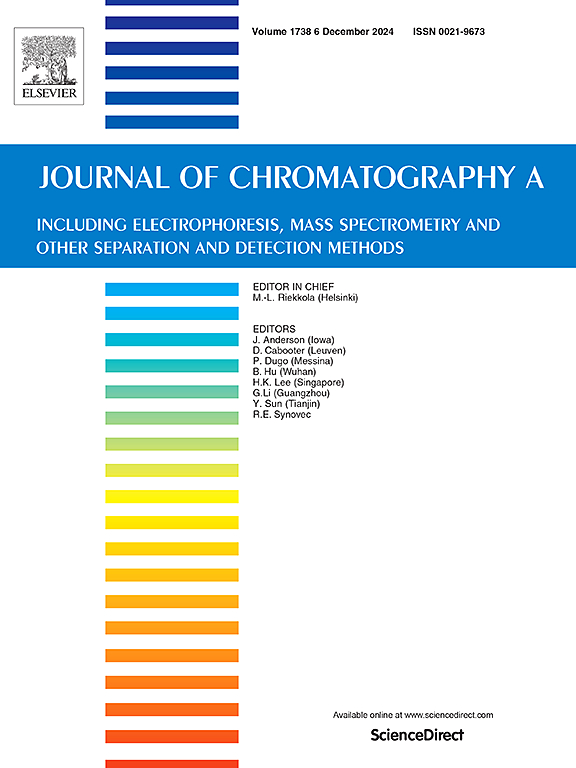Retention mechanism in slalom chromatography: Perspectives on the characterization of large DNA and RNA biopolymers in cell and gene therapy
IF 3.8
2区 化学
Q1 BIOCHEMICAL RESEARCH METHODS
引用次数: 0
Abstract
Significant progress has been made in the last two decades in producing small (), high-purity, and low-adsorption particles, columns and system hardware, for ultra-high pressure liquid chromatography (UHPLC). Simultaneously, the recent rapid expansion of cell and gene therapies for treating diseases necessitates novel analytical technologies for analyzing large (2 kbp) plasmid double-stranded (ds) DNA (which encodes for the in vitro transcription (IVT) of single-stranded (ss) mRNA therapeutics) and dsRNAs (related to IVT production impurities) biopolymers. In this context, slalom chromatography (SC), a retention mode co-discovered in 1988, is being revitalized using the most advanced column technologies for improved determination of the critical quality attributes (CQAs) of such new therapeutics.
In this review, we first recall non-exhaustively the main currently available analytical techniques (enzyme-linked immunosorbent assay (ELISA), agarose gel electrophoresis (AGE), pulse field gel electrophoresis (PFGE), capillary gel electrophoresis (CGE), mass photometry (MP), anion-exchange chromatography (AEX), ion-pairing reversed-phase liquid chromatography (IP-RPLC), hydrophobic interaction chromatography (HIC), size-exclusion chromatography (SEC), hydrodynamic chromatography (HDC), highly converging flow ultra-filtration (HCF-UF), asymmetrical flow field-flow fractionation (AF4), mass spectrometry (MS), and atomic force microscopy (AFM)) for analyzing mixtures containing large nucleic acid biopolymers, while assessing their strengths and weaknesses.
We then focus comprehensively on the SC technique, report on its past applications since its birth, and review in detail the history and evolution of the proposed retention mechanisms accounting for the observations made in SC. This includes and emphasizes the latest physico-chemical insights (shear rates in packed HPLC columns, entropic elasticity and relaxation of dsDNA, dsRNA, and mRNA biopolymers) governing the retention behavior of such biopolymers in SC.
Finally, based on the recent advancements in understanding the fundamentals of retention in SC, we provide some perspectives and recent proof-of-concept for the analytical characterization by SC of large dsDNAs (plasmid digests, polymerase chain reaction (PCR) verification), the separation of supercoiled/circular and linear dsDNAs (plasmid linearization), the isolation and quantification of large dsRNAs impurities present in mRNA samples produced by IVT, and the differentiation between dsRNA conformers.
求助全文
约1分钟内获得全文
求助全文
来源期刊

Journal of Chromatography A
化学-分析化学
CiteScore
7.90
自引率
14.60%
发文量
742
审稿时长
45 days
期刊介绍:
The Journal of Chromatography A provides a forum for the publication of original research and critical reviews on all aspects of fundamental and applied separation science. The scope of the journal includes chromatography and related techniques, electromigration techniques (e.g. electrophoresis, electrochromatography), hyphenated and other multi-dimensional techniques, sample preparation, and detection methods such as mass spectrometry. Contributions consist mainly of research papers dealing with the theory of separation methods, instrumental developments and analytical and preparative applications of general interest.
 求助内容:
求助内容: 应助结果提醒方式:
应助结果提醒方式:


